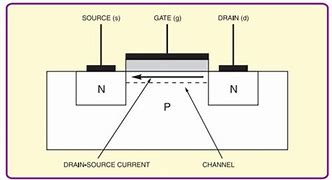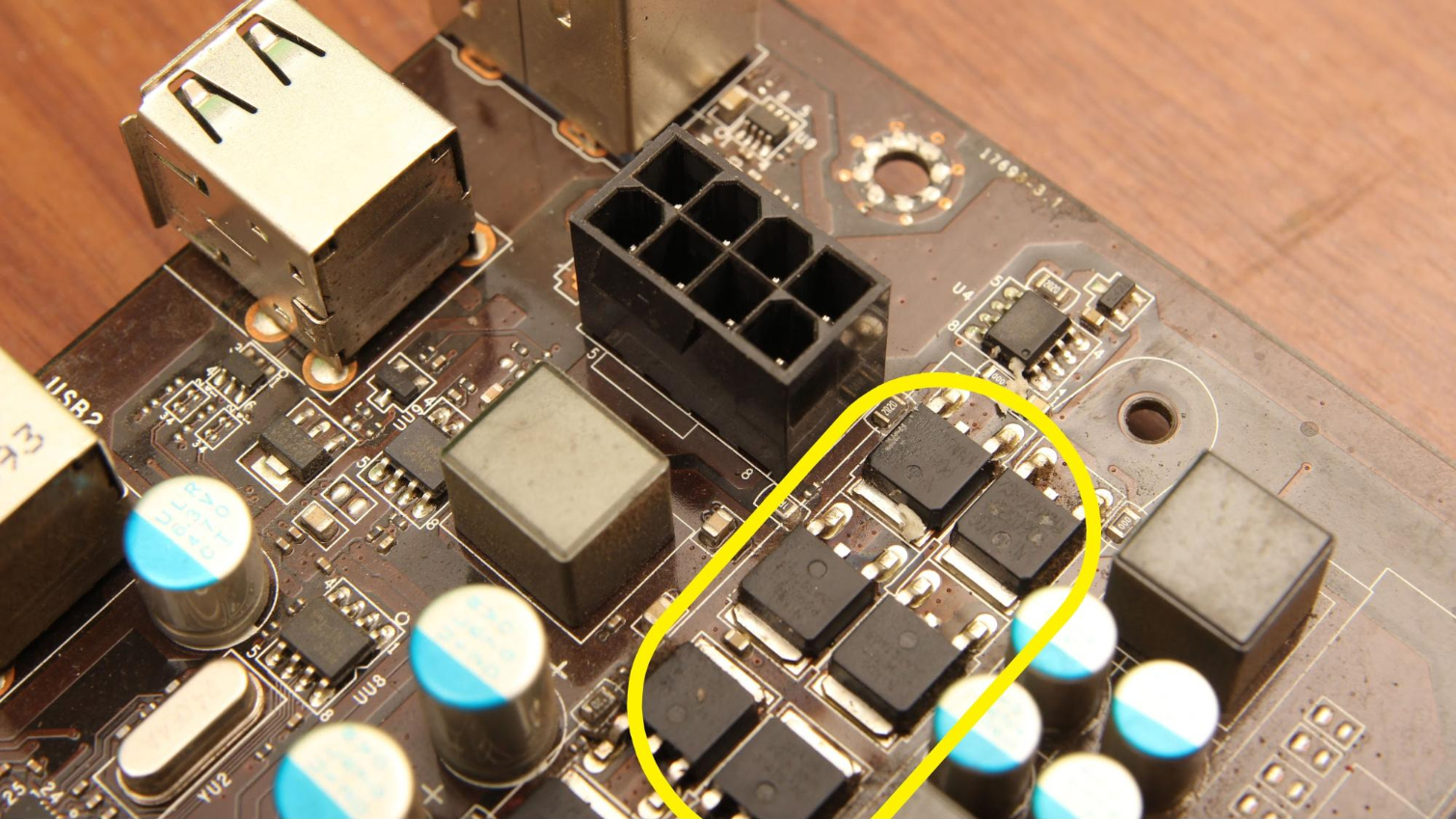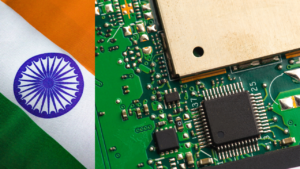Introduction
Power Metal-Oxide-Semiconductor Field-Effect Transistors, or Power MOSFETs, efficiently manage high levels of power. They are specialized semiconductor devices engineered for this purpose. These high-performance components offer rapid switching speeds and outperform regular MOSFETs in various applications.
In this blog, we will explore the fundamental principles, working mechanisms, and versatile applications of Power MOSFETs.
Read More: MOSFET: Powering the Future of Electronics – techovedas
Understanding Power MOSFETs
It is specifically designed to handle high-power levels, engineers construct them in a V-configuration, which also earns them the alternative names “V-MOSFET” or “VFET.” These V-shaped structures allow them to efficiently control and switch high-power loads.
Just as a skilled conductor directs a large orchestra with precision and control, a Power MOSFET efficiently manages high levels of electrical power, ensuring it flows accurately and reliably through electronic circuits.
Follow us on LinkedIn for everything around Semiconductors & AI
Key Features of Power MOSFETs
Power MOSFETs, a subset of MOSFETs, are engineered to handle high power levels efficiently. Their distinct features make them crucial components in a wide range of applications. Here are the key features of Power MOSFETs:
1. On-State Resistance:
When in the ON state, a Power MOSFET exhibits resistive behavior between the drain and source terminals. This resistance is the sum of several contributions, including source resistance (RS), channel resistance (Rch), access resistance (Ra), and more. Controlling these resistances is essential for optimizing the performance of the MOSFET.
2. Breakdown Voltage:
The breakdown voltage is a critical parameter for Power MOSFETs. It defines the maximum voltage that the drain and source terminals can withstand in the OFF state without inducing device breakdown. The doping level and thickness of the N- epitaxial layer significantly influence this characteristic.
3. Body Diode:
Power MOSFETs incorporate a body diode that connects the source metallization to both the N+ and P implantations. This design prevents the formation of an undesired parasitic NPN transistor, ensuring the device’s controllability. The body diode also plays a crucial role in protecting against undesired current flow in certain configurations.
4. High Switching Speed:
It’s excel due to their ability to swiftly switch, making them highly efficient for managing high-frequency operations. This trait proves crucial in scenarios demanding rapid switching of power loads.
5. Low Power Consumption:
Despite being capable of handling high power levels, engineers design Power MOSFETs with a focus on low power consumption.. This makes them suitable for battery-powered devices and applications where energy efficiency is a priority.
6. V-Shaped Configuration:
The V-shaped construction of Power MOSFETs, also known as V-MOSFET or VFET, allows for efficient control and switching of high-power loads. This unique configuration enhances their performance in high-power applications.
The key features of Power MOSFETs, including their on-state resistance, breakdown voltage, body diode, high switching speed, low power consumption, and V-shaped configuration, collectively make them indispensable components in various industries and applications. Understanding and optimizing these features is essential for maximizing the performance and efficiency of its in electronic circuits.
Read More: GlobalFoundries Opens $4 Billion Semiconductor Plant in Singapore – techovedas
Understanding the Working of Power MOSFETs
Specialized semiconductor engineers designed Power MOSFETs (Metal-Oxide-Semiconductor Field-Effect Transistors) to adeptly manage high levels of power with efficiency. They play a crucial role in various electronic applications where precise control of power flow is essential. In this section, we will delve into the detailed working principles of Power MOSFETs.
1. Gate Control and Channel Formation:
Applying a positive voltage (higher potential) to the gate relative to the source terminal generates an electric field that actively draws positive charge carriers (holes) from the p-type substrate towards the gate.This action creates a conductive channel between the source and drain terminals.
2. ON and OFF States:
The Power MOSFET operates in two main states: ON and OFF. In the ON state, the conductive channel allows current to flow from the source to the drain, effectively completing the circuit. Conversely, in the OFF state, no current flows as the channel is effectively “closed.”
3. Voltage Control Mechanism:
The crucial aspect of Power MOSFETs is their voltage-controlled behavior. By varying the voltage applied to the gate terminal, the conductivity of the channel can be precisely controlled. This allows for accurate regulation of current flow through the device.
4. Channel Resistance:
When the MOSFET is in the ON state, it exhibits resistive behavior in the conductive channel. This resistance is determined by various factors, including source resistance (RS), channel resistance (Rch), and access resistance (Ra). Minimizing these resistances is important for optimizing performance.
5. Reverse Bias Protection:
It is well-suited for applications where reverse voltage protection is crucial. They naturally block current flow in the reverse direction, safeguarding sensitive components from potential damage.
6. Body Diode Functionality:
A key characteristic of Power MOSFETs is the presence of a body diode. This diode conducts current in one direction and provides an additional layer of protection, particularly in inductive load applications.
7. Switching Speed:
It is known for their high switching speeds. They can rapidly transition between ON and OFF states, making them suitable for applications requiring fast response times.
It’s offer precise control over power flow, making them invaluable in a wide range of electronic devices and systems. Understanding their working principles is essential for effectively utilizing them in various applications, from power supplies to motor controllers and beyond.
Read More: What Are Thyristors: Workhorses of Power Control – techovedas
Types of power MOSFETs
It’s (Metal-Oxide-Semiconductor Field-Effect Transistors) come in various types, each designed for specific applications and operating conditions. Here are the main types of Power MOSFETs:
Enhancement Mode (E-MOSFET):
- Enhancement mode MOSFETs remain in a normally off state until a voltage actively applies to the gate terminal. This action facilitates the flow of current between the drain and source terminals. Engineers commonly employ them in applications requiring controlled switch operation.
Depletion Mode (D-MOSFET):
- Depletion mode MOSFETs are normally on and require a negative voltage at the gate terminal to turn them off.These MOSFETs are less prevalent and engineers frequently utilize them in applications demanding a normally conducting state, where a gate voltage actively reduces the flow of current.
N-Channel and P-Channel MOSFETs:
- These classifications are based on the type of semiconductor material used. N-Channel MOSFETs have an N-type channel between the drain and source, while P-Channel MOSFETs have a P-type channel. Engineers employ them in complementary configurations, exemplified in CMOS technology.
Trench MOSFET:
- In trench MOSFETs, the structure of the transistor is created by etching a trench into the silicon substrate. This design allows for higher cell density and improved performance.
Super Junction MOSFET:
- Super junction MOSFETs use a unique structure that enables them to handle higher voltage levels efficiently. They are commonly used in high-voltage applications like power supplies and inverters.
DMOS (Double-Diffused MOSFET):
- DMOS transistors have a specific structure that allows for a higher breakdown voltage. They are widely used in power electronics for applications requiring high voltage handling capabilities.
LDMOS (Laterally Diffused MOSFET):
- LDMOS transistors are optimized for high power applications at lower frequencies, such as RF amplifiers in communication systems.
VMOS (V-Groove MOSFET):
- Engineers design VMOS transistors with a V-shaped groove in the silicon substrate, actively enabling enhanced power handling capabilities and a reduction in on-state resistance.
UMOS (UMOSFET – U-groove MOSFET):
- UMOS transistors utilize a U-shaped groove structure, offering improved switching speed and reduced conduction losses.
Power MOSFET Modules:
- These are integrated packages containing multiple MOSFETs optimized for high-power applications. They often include additional features like thermal management and protection circuits.
Choosing the right type of Power MOSFET depends on factors such as the required voltage and current ratings, switching speed, and the specific application’s demands. Each type is engineered to excel in particular scenarios, ensuring efficient power management in diverse electronic systems.
Applications of Power MOSFETs
Engineers specifically design Power MOSFETs (Metal-Oxide-Semiconductor Field-Effect Transistors) to actively handle high levels of power with efficiency.. Their unique characteristics make them indispensable in various industries. Let’s explore the diverse applications where it is play a crucial role.
Power Supplies:
Engineers extensively utilize Power MOSFETs in power supply units to actively regulate and control the flow of electrical power. They employ them in both linear and switching power supplies to efficiently convert and deliver power to electronic devices.
DC-DC Converters:
Engineers extensively utilize its in power supply units to actively regulate and control the flow of electrical power. They employ them in both linear and switching power supplies to efficiently convert and deliver power to electronic devices.
Motor Controllers:
It is find extensive use in motor control applications. They provide precise control over the speed and direction of motors, making them crucial in various electromechanical systems.
Low Voltage Switches:
Engineers utilize Power MOSFETs in low voltage switches, where they actively function as electronic switches to control the flow of current.They find applications in circuits with voltage levels below 200V.
Amplifiers and Audio Systems:
Engineers actively use Power MOSFETs in audio amplifiers to amplify weak electrical signals, delivering higher power output.. This application is common in audio systems, including speakers and amplifiers.
Automotive Electronics:
Power MOSFETs play a pivotal role in automotive electronics, particularly in systems like engine control units (ECUs), electric power steering, and electronic braking systems. They are crucial for precise control of various functions in modern vehicles.
Power Inverters:
Power inverters, which convert DC power to AC power, rely on Power MOSFETs for efficient and reliable operation. Applications like solar power systems and uninterruptible power supplies (UPS) actively employ these inverters..
High-Frequency Applications:
Due to their rapid switching speeds, Power MOSFETs are ideal for high-frequency applications. They find use in applications like radio frequency (RF) transmitters and switch-mode power supplies.
Lighting Systems:
Power MOSFETs are integral components in various lighting systems, including LED drivers. They enable precise control of current flow, contributing to the efficiency and longevity of LED lighting.
Telecommunications:
In the field of telecommunications, engineers actively utilize Power MOSFETs in various applications, such as in base stations and signal amplifiers, to ensure efficient and reliable signal transmission.
Power MOSFETs are versatile components with a wide range of applications across industries. Their ability to efficiently handle high-power levels and provide precise control makes them indispensable in modern electronic systems. Understanding their diverse applications is essential for harnessing their potential in various fields of technology.
Power MOSFETs vs. MOSFETs: Similarities and Differences
Engineers widely use Metal-Oxide-Semiconductor Field-Effect Transistors (MOSFETs) and Power MOSFETs, recognizing them as crucial semiconductor devices in electronics.. While they share fundamental principles, there are distinct characteristics that set them apart. This comparison will shed light on their similarities and differences.
Similarities:
| Aspect | Explanation |
|---|---|
| Operating Principle | Both MOSFETs and Power MOSFETs operate on the principle of voltage-controlled conduction. A voltage applied to the gate terminal controls the flow of current between the source and drain terminals. |
| Basic Structure | They have a similar basic structure, comprising a gate, source, and drain terminals on a semiconductor substrate, typically silicon. An insulating oxide layer separates the gate from the substrate. |
| Types (N-Channel and P-Channel) | Both types exist in N-Channel and P-Channel configurations. N-Channel conducts when a positive voltage is applied to the gate relative to the source, while P-Channel conducts when a negative voltage is applied. |
Differences:
| Aspect | Explanation |
|---|---|
| Application Focus | MOSFETs find use in a broad range of applications, including amplification and switching in low-power circuits. Power MOSFETs are specifically designed to handle high power levels and are commonly used in power electronics. |
| Voltage Ratings | Power MOSFETs are engineered to handle higher voltage levels compared to standard MOSFETs. This makes them suitable for applications where robust voltage regulation is essential. |
| ON-State Resistance (RDS(on)) | Power MOSFETs typically have lower ON-state resistance, minimizing power losses and improving efficiency in high-power applications. |
| Switching Speed | Power MOSFETs are optimized for faster switching speeds, allowing them to transition rapidly between ON and OFF states. This feature is crucial for high-frequency applications. |
In conclusion, while MOSFETs and Power MOSFETs share common principles, their distinct characteristics make them suitable for different applications. MOSFETs are versatile and widely used, whereas Power MOSFETs excel in high-power scenarios, offering lower ON-state resistance and faster switching speeds. Understanding their unique attributes is essential for choosing the right device for specific electronic circuits.
Future Trends and Advantages of Power MOSFETs
Power MOSFETs (Metal-Oxide-Semiconductor Field-Effect Transistors) have been pivotal in advancing power electronics. Their unique characteristics and applications have paved the way for innovations in various industries. Looking ahead, there are promising trends and distinct advantages that signal a bright future for Power MOSFET technology.
Future Trends:
- Miniaturization and Integration:
The trend towards smaller and more compact electronic devices is driving the miniaturization of Power MOSFETs. Integrated modules with multiple MOSFETs and additional circuitry are becoming increasingly common, enabling higher power density and greater functionality. - Wide Bandgap Materials:
The adoption of wide bandgap semiconductors like Silicon Carbide (SiC) and Gallium Nitride (GaN) is gaining momentum. These materials offer superior performance in terms of higher breakdown voltage, faster switching speeds, and lower conduction losses compared to traditional silicon-based MOSFETs. - Higher Voltage Ratings:
Engineers anticipate that future Power MOSFETs will actively accommodate even higher voltage levels, rendering them suitable for a range of applications including electric vehicles, renewable energy systems, and high-voltage power supplies. - Improved Thermal Management:
Efforts are being made to enhance thermal management techniques for Power MOSFETs. This includes advanced packaging materials and innovative cooling solutions to ensure optimal performance and reliability, especially in high-power applications. - Enhanced Efficiency and Reliability:
Engineers actively focus on ongoing research and development to reduce on-state and switching losses, thereby further enhancing the overall efficiency of Power MOSFETs. Additionally, advancements in materials and manufacturing processes are enhancing the reliability and lifespan of these devices.
Advantages of Power MOSFETs:
- Low On-State Resistance (RDS(on)):
Power MOSFETs exhibit minimal resistance when conducting, leading to reduced power losses and improved efficiency in high-power applications. - Fast Switching Speeds:
Power MOSFETs can rapidly transition between ON and OFF states, making them ideal for applications requiring high-frequency operation. - Precise Voltage Control:
These devices offer precise control over current flow through the gate voltage, allowing for accurate regulation of power in electronic circuits. - High Voltage Handling Capacity:
Power MOSFETs are designed to handle high voltage levels, making them suitable for applications that require robust voltage regulation. - Versatility in Applications:
From power supplies and motor control to renewable energy systems and telecommunications, Power MOSFETs find applications in a wide range of industries, showcasing their versatility and adaptability.
Exciting developments in miniaturization, integration, wide bandgap materials, and enhanced thermal management actively mark the future of Power MOSFET technology. Leveraging the distinct advantages of Power MOSFETs, such as low on-state resistance and fast switching speeds, will continue to drive advancements in power electronics across various industries.
Conclusion
Power MOSFETs, with their high power-handling capabilities and precision, play a pivotal role in shaping various industries. From wearables to IoT devices, drones, and gaming peripherals, their applications are diverse and continue to expand. As technology advances, Power MOSFETs are actively positioning themselves at the forefront of innovation, empowering a wide range of electronic devices and systems with enhanced performance and efficiency..








